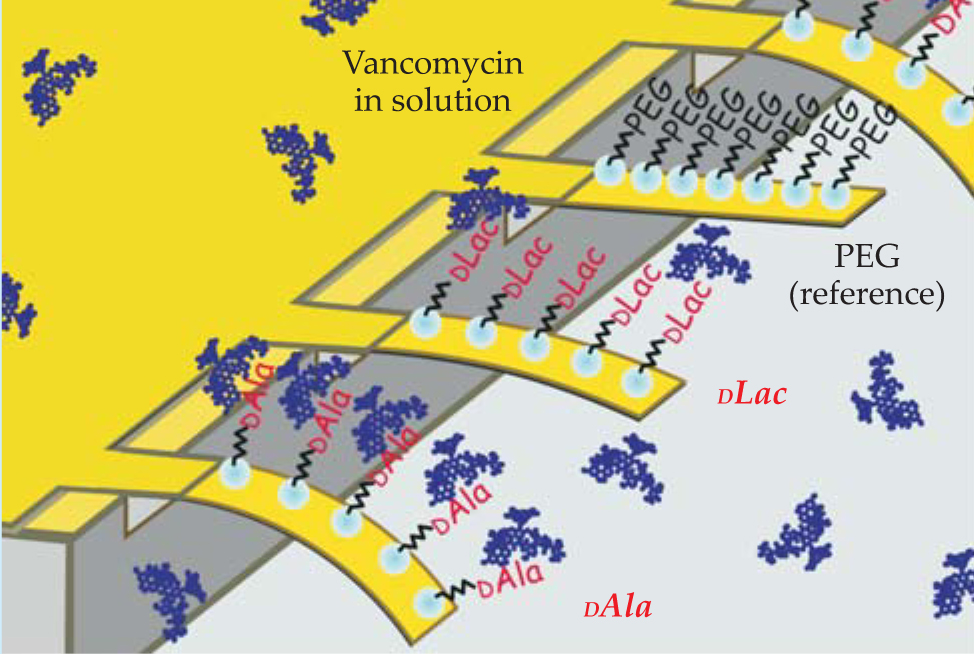Sensing superbug stress under drug binding
DOI: 10.1063/1.4796733
Overuse of antibiotics has spawned strains of bacteria whose cell walls are impervious to the crippling blows once delivered by penicillin and its derivatives. One such so-called superbug, methicillin-resistant staphylococcus aureus, although found primarily in prisons and hospitals, has now spread beyond those confines. Despite the controlled use of the drug vancomycin, a last line of defense against MRSA, the latest threat comes from vancomycin-resistant bacteria, which mutate by deleting a key hydrogen bond that allows the drug to bind and inhibit cell wall growth, thereby mechanically weakening the bacteria. Rachel McKendry at University College London and her collaborators recently demonstrated a nanoscale cantilever system that is sensitive enough to detect the difference between the native drug-sensitive bacteria and the mutated resistant form with the missing hydrogen bond. The researchers coated silicon cantilevers with vancomycin-resistant (DLac in the schematic) and vancomycin-sensitive (DAIa) bacterial cell-wall analogues, then immersed them in a solution containing free vancomycin molecules. As expected, the molecules preferentially bound to the cantilevers coated with the drug-sensitive analogue; those cantilevers experienced a marked deflection—as measured by an optical detector—that equated to an 800-fold difference in binding compared with the cantilevers coated with the drug-resistant analogue. The researchers believe their system will lead to sensitive, nondestructive, and rapid nanomechanical biosensors for high-throughput drug-target interaction studies and will aid in the design of more effective drugs. (J. W. Ndieyira et al., Nat. Nanotechnol. 3, 691, 2008.http://dx.doi.org/10.1103/Nat.Nanotechnol.3.691






